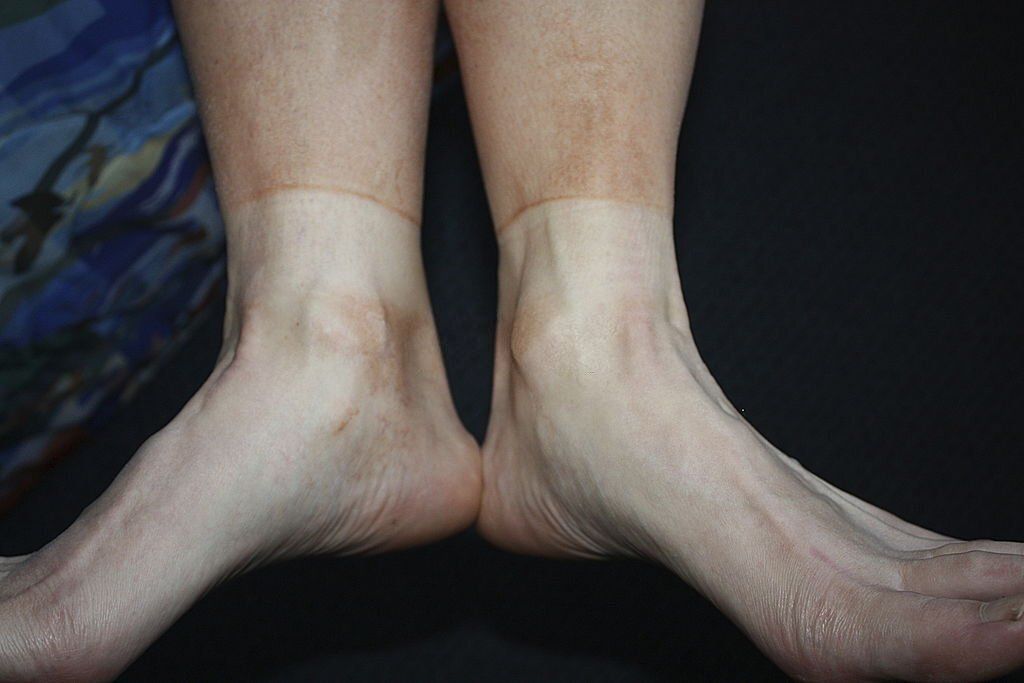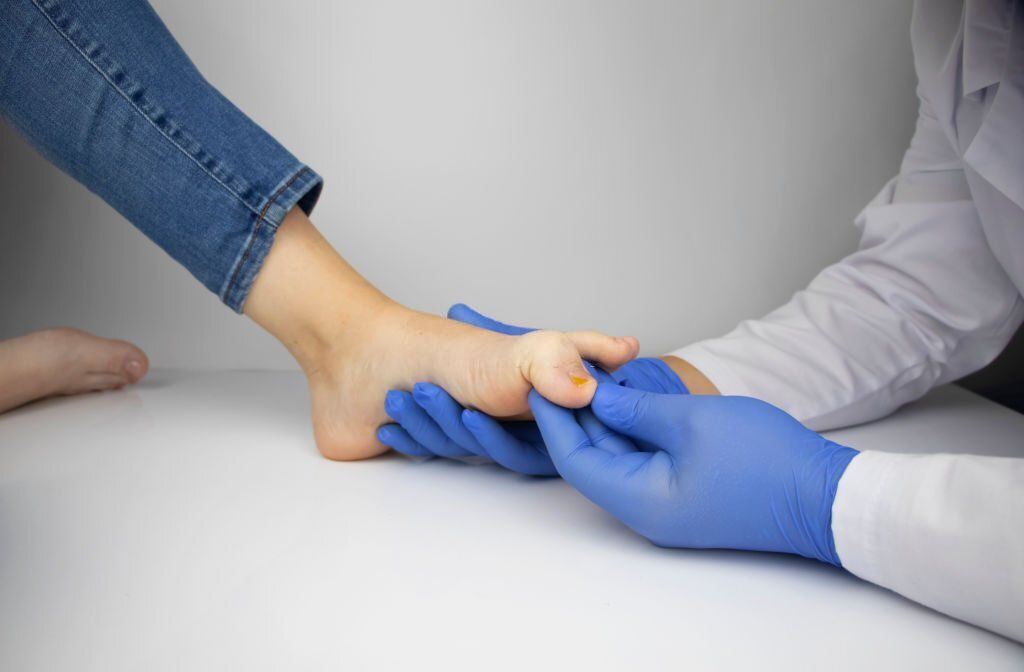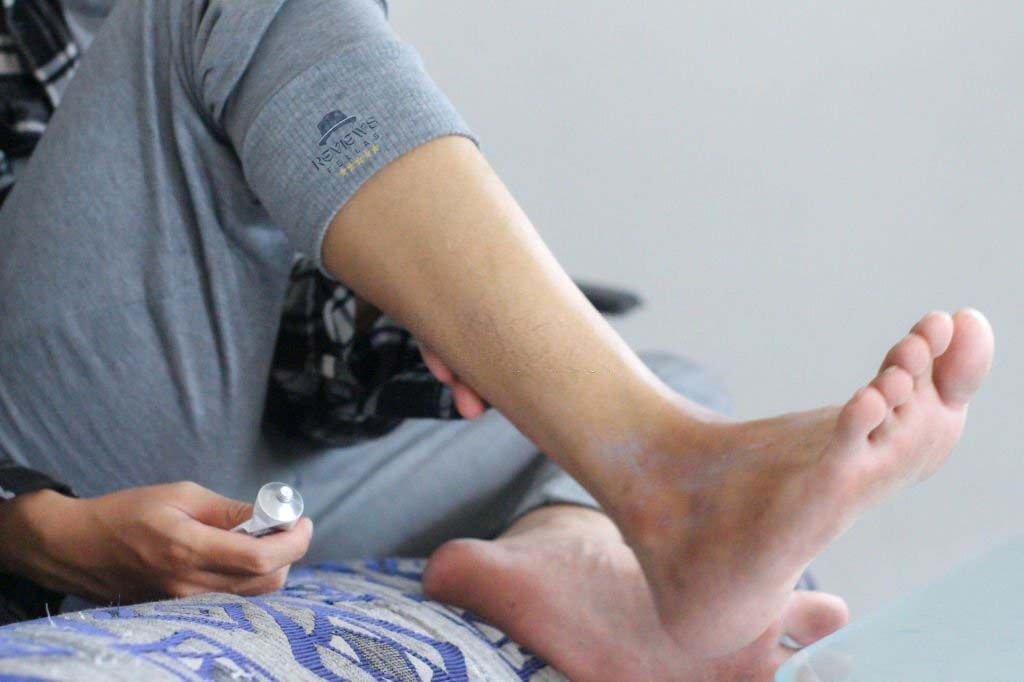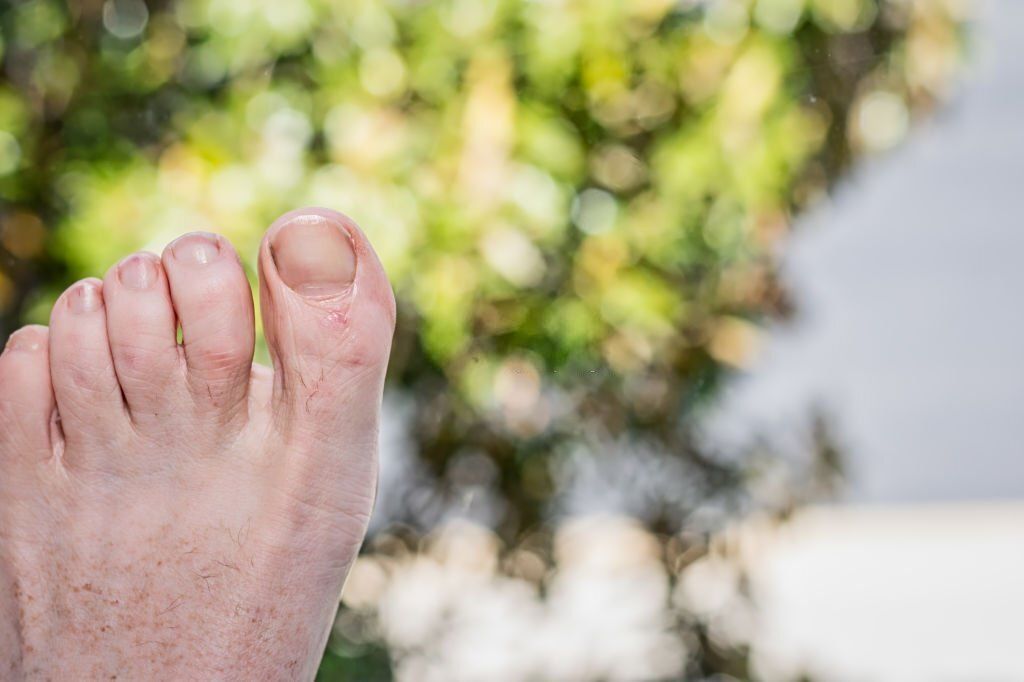This article is reviewed, corrected, and approved by: Julia Weiss CNP| RN | MPH
Skin tone is the definition of our body. No matter what color you own, it's your identity. If you are dark, it's your body's natural hormonal approach that makes your color.
The same goes for if your complexion is white. Darker skin tone depends on the melanin production of our body. The more melanin our body produces, the darker tone we will get.
It is totally natural and depends on genes and environmental factors. Even we do make-up according to our skin tone. But when your specific body part doesn't match your original skin tone, it is something you won't like it. Isn't it?
And in most cases, our legs and foot get Hyperpigmentation. It really looks odd. Why is this?
Why do we get Hyperpigmentation on toes and legs? Is it genetic? Or it depends on the weather? Let's find out the real causes.
Hyperpigmentation: What Is It?
When your body releases more melanin, Hyperpigmentation occurs on your skin. Human skin color defines by this melanin.
There's nothing wrong with melanin. In fact, melanin is the natural pigmentation, and it is responsible for the color of our hair, skin, and eyes. When melanin production increases more than regular production, different kind of dark spot develops on our skin.
This condition is called Hyperpigmentation. It can be appeared on the hands, toes, dorsal foot, elbow, neck, or knees.
What Causes Hyperpigmentation On Toes?

There are some common reasons that are responsible for Hyperpigmentation on toes.
Age Spot
It is natural when you get to age, you will get brown spots on your legs. Usually, they start to appear on the hands and legs.
The more you stay outside in the open sun exposure, the darker these spots will become. Age makes our body change, as well as it makes changes in our skin tone. With aging, melanin production may increase.
Over Sun Exposure
When your skin comes to direct contact with the sun for a prolonged period, the body starts to generate more melanin to keep it safe. Sunspots on the skin, especially on legs and hands, can develop because of this overexposure to sunlight. Over-sun exposure can make your skin damage also. Sunspots on skin are just a sign of it.
Melasma
Hormonal changes can cause darker spots or patches of skin. At the time of pregnancy, this type of Hyperpigmentation is expected. Most pregnant women encounter these types of Hyperpigmentation.
And the positive part is that hormonal changes get normal when the baby arrives. Medically this condition is called Melasma.
Skin Inflammation Or Rash.
Having inflammation of the skin can cause Hyperpigmentation in specific areas of human skin. There are many skin conditions that can cause dark spots, including acne, pimples, eczema, or an injury to the skin. If you have dark skin, the chances of developing post-inflammatory Hyperpigmentation are high.
Usually, people suffer from rash or eczema on their hands or legs, and after some time, they used to get high pigmentation in that specific area.
Some Specific Medical conditions
There are some medical conditions that can cause brown spots on legs, hands, and even the face. Hemochromatosis and Addison's disease are two of them.
These are the more severe causes of Hyperpigmentation.
An adrenal gland is affected by Addison's disease. Some areas of the body can become hyperpigmented. Like,
- Toes
- Elbows
- Knees
- Lips
- Cheek interior
As a result of hemochromatosis, the body retains too much iron. In this case, the skin can become darker or tanned.
Diagnosis Of Hyperpigmentation

Usually, you get brown spots on legs or sun spots on skin without any physical problem. But sometimes, it gets severe under some conditions.
Hyperpigmentation can be diagnosed by a doctor based on its type and cause.
They will do the following checks:
- Inquiring about sun exposure and other lifestyle factors
- A special light called woods light may be used to examine the skin
- Inquiring about medical history
- It may be necessary to take a biopsy, or a small sample of skin, to rule out skin cancer in some cases.
- Check your diabetes and your food habits.
- Check the dark spots to find out their severity.
After analyzing these steps, doctors will make a treatment plan that suits you best.
How To Get Rid Of Hyperpigmentation On Toes?

When you start reading this article, you are probably seeking the answer to how to get rid of dark spots on legs.
Here I will write some of the easy techniques that can be helpful for your toes and legs.
Initially, you should allow them to fade naturally. Dark spots may eventually disappear, but the process is very slow and not always guaranteed.
But people do not want to wait that much. So if you can afford you can start these treatments.
Spot Cream Or Topical Creams
Hyperpigmentation is often treated with topical treatments. Various ingredients will be used in a topical treatment to lighten the skin, such as:
- Cysteamine Cream
- Niacinamide
- Mequinol
- Arbutin
- Retinoids
- Vitamin C
- Soy
Procedures For Cosmetic Enhancement
Hyperpigmentation can also be reduced with cosmetic procedures that lighten areas of the skin, such as legs, toes, face, or hands. It is crucial to consult with a skin care specialist about the process and possible side effects before undergoing one of these procedures.
If you do not consider checking with a professional and experienced doctor, these types of cosmetic procedures can ruin your skin permanently.
Hyperpigmentation can be treated with the following cosmetic procedures:
- Peeling chemicals
- Laser for dark spots
- An intense pulse of light.
Quick Home Remedies For Toe Hyperpigmentation

Everybody can not afford these pricy creams and fancy treatments. But this doesn't mean they can't get rid of the hyperpigmentation problem. Actually, home remedies are the best option to treat any kind of skin problem.
Regular pedicures will help our legs and toes shine and glow. Even socking your legs with warm shampoo and water daily after coming back home would be a great relaxing method for our legs. It will remove all the dirt and also makes our feet' skin smooth and soothing.
I usually follow this technique. Warm water socking helps my toes and legs to remove the suntan also. Also, I feel relaxed after a long day of work.
The skin should always be tested for irritation before using new treatments and natural remedies. There are also some other home remedies available in our surroundings. Let's discuss those.
Use Of Aloe Vera
Aloesin may lighten Hyperpigmentation. It is a compound found in aloe vera. Melanin production in the skin is impeded by aloesin. Regular use of aloe vera gel directly collected from plants can be useful for Hyperpigmentation in toes, legs, and face.
It has been suggested that during pregnancy, women should use aloe vera juice or can take supplements. It helps to reduce Melasma.
Green tea
Hyperpigmentation may be improved by green tea extracts. Green tea has anti-inflammatory and antioxidant properties. Green tea extracts may improve sunburn and Melasma.
Using Good Sunscreen
Whenever you go outside in day time, use good sunscreen. SPF 50 will work best on your toes and legs. If your stay outside for a long period of time outside, make sure you reapply the sunscreen every two to three hours.
Vitamin C And Vitamin E
Enrich your diet with vitamins E and C. These vitamins can help to reduce pigmentation on your skin. Eat lots of green vegetables and fish, which are filled with vitamin c and vitamin E.
Also, you can take supplements of Vitamins. Using oil containing vitamin C in your feet will make your skin, nails, and toes shine and be healthy.
Vinegar Made From Apple Cider
The acetic acid in apple cider vinegar can lighten pigmentation on the skin and improve your appearance.
Honey
In skin care products, honey is full of antioxidants. People believe that when you apply honey to the skin, it may promote new cell growth and fade sunspots.
Lemon Juice
For a long time, lemon juice has been used as a home remedy to lighten hair and skin. It is a common ingredient in skin-lightening creams. If you don't have sensitive skin, you can apply lemon juice to your legs and toes.
Message the lemon juice on the skin and wash it with cold water. It will diminish your pigmentation problem.
Conclusion
There are many reasons why Hyperpigmentation occurs on the skin. Inflammatory Hyperpigmentation, age spots, and Melasma are some common reasons for Hyperpigmentation.
Though hyperpigmentation isn’t something a matter of worry, some people may choose to remove it or reduce it. They find those spots annoying and ugly. Before proceeding to chemical procedures, they should start taking care of their skin more intensely.
Such as sunscreen using, pedicure moisturizing, and changing eating habits. Rather, there are always medical and chemical treatment options are opened.
Frequently Asked Questions (FAQs)
Question 1 - How to avoid tanning?
Answer 1: Use sunscreen whenever you go outside. SPF 50 should be counted. Wear sunglasses and an umbrella. If possible, avoid the sun from 10 am to 4 pm.
Question 2: What is the difference between Melasma vs Hyperpigmentation?
Answer 2: The main difference between Melasma and other types of Hyperpigmentation is Melasma is mainly caused by hormonal changes, and other Hyperpigmentation may occur due to suntan or other age-related issues.
Question 3: How does vitamin C affect Hyperpigmentation?
Answer 3: Vitamin C can fade Hyperpigmentation since it hampers melanin production. Regular use of vitamin C oil in the skin can help reduce Hyperpigmentation and other spots.
Question 4: Which vitamin reduces melanin?
Answer 4: Vitamin C helps in reducing melanin. It is a natural nutrient and one of the most important nutrients our bodies need. It reduces the activity of the tyrosinase enzyme, thus inhibiting melanin synthesis.


